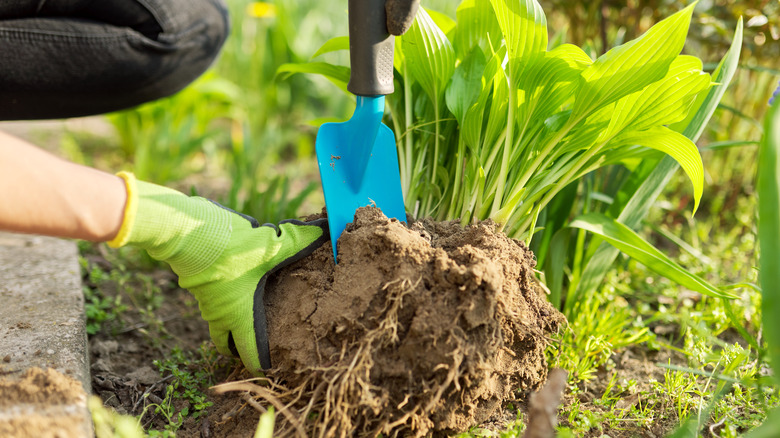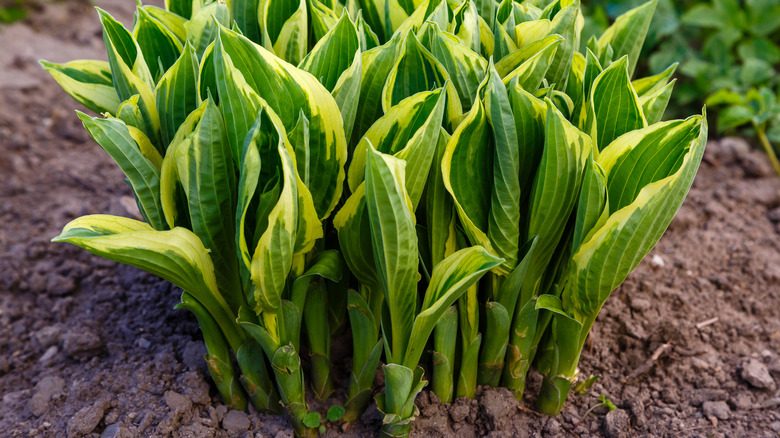How Important Is It To Divide Hostas In Your Garden?
For many gardeners, hostas are a fixture in the shady areas of their garden design and a favorite choice for planting underneath trees. They're a faithful standby in challenging places where grass won't grow, and their attractive foliage complements nearly any style of garden. Since there are so many varieties, it's easy to find one that perfectly suits your color palette and desired aesthetic.
Another plus about hostas? They're easy, low-maintenance plants. They produce vibrant, overlapping greenery (Many varieties also flower!) and they'll bless you with a long lifespan. Some perennials can be sensitive and temperamental, but as long as you follow a few basic care guidelines for hostas, you shouldn't run into too many problems at all.
There are a couple of things you should be mindful of, though. First off, one common culprit to watch out for is slugs. Slugs will feast on the leaves of your hostas until they're nothing but Swiss cheese. Luckily, keeping them at bay is quite simple, and you can use items from your kitchen or medicine cabinet in order to do so. Around the base of the hosta, spread a circle of eggshells or epsom salt. An added bonus is that both are great, natural methods for improving the health of your soil, too. The next thing is why and how you should divide your hostas when they get too big, which we'll guide you through below.
Why and how you should divide your hostas
If your hostas are growing too large for their area or you'd simply like to propagate new plants elsewhere in your garden, you'll want to divide them. Gardening Know How says that dividing them helps clean up the overall look of your hostas, allows you to clear out any dead portions, and helps maintain the size you desire.
As for the "how," you can divide your hostas in the spring or early summer months, according to Gardening Know How. However, the site does note that spring is prime time, as the spikes of the hosta plants are still fairly short. You're less likely to ruin any leaves if the plants are small. Better Homes & Gardens suggests using a flat spade shovel or garden fork. Make sure your tools have been thoroughly cleaned before you begin.
Gardening Know How says to start the dividing process by digging up the whole clump of roots and get rid of any excess dirt by shaking the plant so you have a clear visual of the root system. Next, begin cutting through the clump, working your way from the crown downwards. While you can divide the cluster into single buds, Better Homes & Gardens advises your divisions contain three sets of buds for each cluster. When you transplant your hostas to their new location(s), be sure to add a generous scoop of compost to the hole before dropping the plant in, and water thoroughly once you're done.

